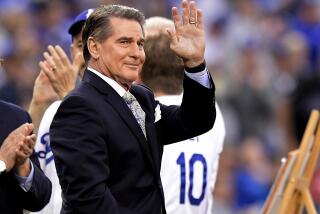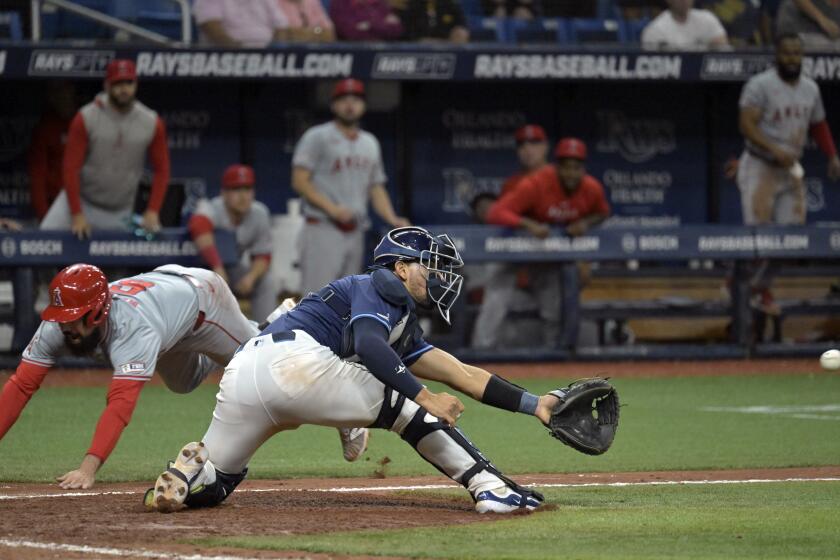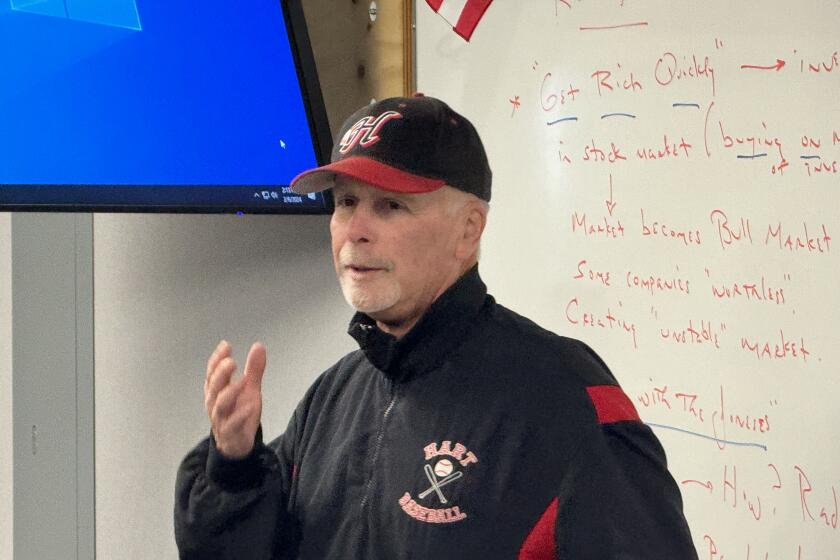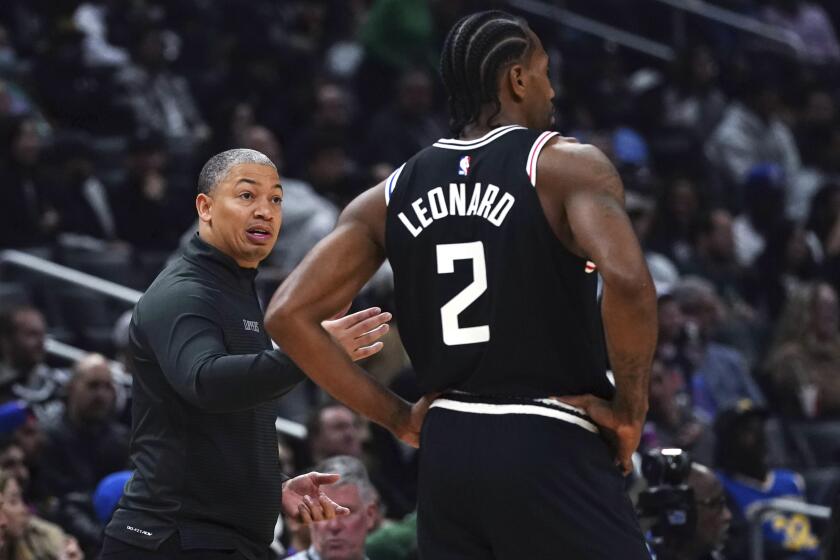Infield of dreams
The kid wasn’t playing every day, and he wasn’t even a kid anymore. The Dodgers didn’t trust him in the field, so they stuck him on the bench.
He had heard the Montreal Expos might play him every day, if only the Dodgers would trade him. So Steve Garvey walked into the office of the general manager, Al Campanis, and asked what the Dodgers intended to do with him.
“We still think you’re an integral part of the team,” Campanis told Garvey.
There would be no trade. Good thing -- for the Dodgers, for their fans, for baseball history and ultimately for Garvey.
“A week or two later, everything changed,” Garvey said.
It is 35 years later, and Garvey remembers the date by heart: June 23, 1973.
On that day, in the second game of a doubleheader against the Cincinnati Reds, the Dodgers started a new infield combination. Garvey played first base, with Davey Lopes at second base, Bill Russell at shortstop and Ron Cey at third base.
That infield would play together for the rest of that season -- and eight more, setting the most durable of baseball records.
“It’s very special we got to play together for so long,” Russell said. “But you had to produce. You had to win.”
And they did, in unlikely fashion.
The Dodgers did not groom this infield. Russell and Lopes came up as center fielders, but coach Monte Basgall converted Russell to shortstop and Lopes to second base. Cey came up as a third baseman, but so did Garvey.
The Dodgers gave Garvey two years there, watched too many errant throws sail past first base and gave the job to Cey. They tried Garvey in left field and right field, without excitement. And then, in a spell of exasperation more than a stroke of genius, Manager Walter Alston asked Garvey whether he could play first base.
“I had played one game in triple A and one game in Little League,” Garvey said. “I wasn’t going to tell him that.”
In 1974, his first full season at his new position, he won the first of four Gold Glove awards and was selected the National League most valuable player. Fans voted him into the All-Star game -- as a write-in candidate.
By the time the Dodgers broke up that infield, Garvey had been an All-Star eight times, Cey six, Lopes four and Russell three.
The Dodgers never finished lower than third during that nine-year run, with four trips to the World Series. They lost to the Oakland Athletics in 1974, to the New York Yankees in 1977, to the Yankees again in 1978.
In 1981, the infield got one last chance. The Dodgers survived three elimination games against the Houston Astros in the division series, then two elimination games against Montreal in the National League Championship Series.
The Yankees awaited. The Dodgers lost the first two games of the World Series, then won the next four. In the last three games of the Series -- the last three games the infield played together -- Lopes led off, followed by Russell, Garvey and Cey.
“It was kind of a storybook year,” Russell said. “We finally won the World Series, and we beat the Yankees. We knew it might be our last hurrah together.”
The Dodgers traded Lopes that winter, making way for a hot prospect named Steve Sax. Cey and Garvey lasted one more summer with the Dodgers, and Russell evolved into a utilityman.
The record stands, today and forever. It is a cherished artifact of Dodgers history today, but it was a curiosity at the time.
“We didn’t even know we were establishing a record until someone went through the archives and found out there was such a thing,” Lopes told The Times in 2004. (Lopes, in treatment for prostate cancer and on leave from his coaching position with the Philadelphia Phillies, could not comment for this story.)
The long-playing infield lasted nearly twice as long as the previous record-holders, celebrated in baseball lore as Tinker to Evers to Chance.
That would be shortstop Joe Tinker, second baseman Johnny Evers and first baseman Frank Chance. The trio joined third baseman Harry Steinfeldt in the Chicago Cubs’ lineup from 1906 to 1910 -- infield longevity second only to Garvey, Lopes, Russell and Cey, according to Dodgers historian Mark Langill.
“It’s so unique,” Garvey said. “It’s a record that can’t be broken, because the business has changed. You can’t keep one guy for eight years, much less four.”
Said Russell: “If we would have stayed much longer and started much later, we’d be part-owners.”
Garvey and Cey represent the Dodgers in public appearances, and Russell works for the commissioner’s office in umpire evaluation. Each lives in Southern California, where fans can hardly say hello to one member of the infield without mentioning the other three.
“When you go to the World Series four times in 10 years and have a world championship, with the whole infield being All-Stars multiple times, flavored with All-Star outfielders sprinkled in and the great pitching staffs we had, that endears us greatly to them,” Cey said.
“We gave them exactly what they wanted. Their response is that they consider that to be a golden era. They just really appreciated the way we played.
“We became family to them. They became family to us.”
The Dodgers set major league attendance records back then, almost annually, beating the rest of baseball to 3 million fans by a decade. Those fans saw their favorite players in Dodger blue year in and year out, and regularly in October.
And, as sure as the Dodger Dogs were grilled and the outfield wall was free of advertising, those fans saw Garvey at first, Lopes at second, Russell at shortstop and Cey at third.
“A lot of the people that have kids and take them to the game now came up with us,” Russell said. “They say those were the good old days.”
More to Read
Get our high school sports newsletter
Prep Rally is devoted to the SoCal high school sports experience, bringing you scores, stories and a behind-the-scenes look at what makes prep sports so popular.
You may occasionally receive promotional content from the Los Angeles Times.







